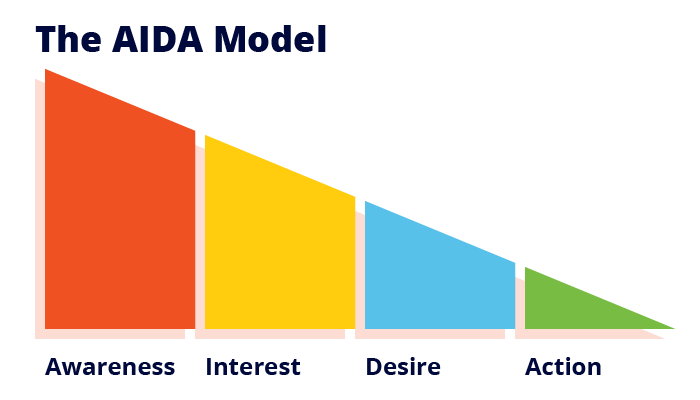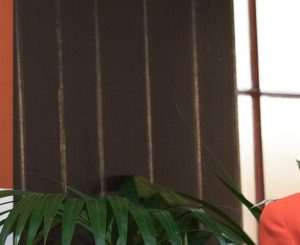Where’s the Trust in Brands?
Russel Howcroft, of Gruen fame and Chief Creative Officer at PwC shared his views with an eagerly attentive room at the Starlight Children’s Foundation CEO Breakfast this week. What he had to say wasn’t sugar-coated or even very uplifting, but it was a wakeup call for those of us charged with building purposeful brands and establishing trust in the marketplace for our organisation. Good2Give’s Head of Marketing Communications was all ears and took notes.
I won’t lie to you: Russel Howcroft’s speech was awesome and awful.
It was awesome because Russel Howcroft is exceptionally good at what he does. His mountain of experience in creative and strategic advertising and marketing, and the clarity with which he advocates for brands to build their stories by connecting with people emotionally, is a cut above the rest. He’s also very amusing and engaging to listen to.
It was awful for the same reasons. For a start, he spoke about the economy looking sad and highlighted that Australia is now on the Human Rights Watch list. He also didn’t pull any punches about telling the room that organisations and their marketing leadership are a big part of the problem when it comes to the decline in trust for all institutions: business, Government and charity. Why? Because we’ve stopped investing in our brand value.
Gulp. Well, that’s me told.
He also spoke at a macro level but from his specialist perspective. Howcroft pointed to a decline in media markets as an indicator that the economy isn’t in good shape. Social connectivity and knowledge doesn’t fare well as a result, either. The cynics out there will say that it’s because everyone’s just over media: they’re blind to it and it wafts over them, and there’s just too much of it. Whatever your attitude to media is, Howcroft’s rationale stands because if organisations aren’t investing in communicating their messages, it means they’re not promoting to customers and stakeholders, that means they’re unlikely to generate income, that means a decline in operational budgets and employment, and down the slippery slope we go. If you’re not working, you’re not spending. It also means institutions aren’t informing anyone and communicating transparently – and there goes trust.
“The accountants have won the argument”
Russel Howcroft very passionately told the room we need some youthful energy in Australia and to embrace the shifting power base from the old guard to the new, much like Austria, France and New Zealand are demonstrating.
Now, the quick win for the youth vote is digital. Marketers are all in love with digital. It’s cheap, it’s quick, it’s measurable. It’s also less labour intensive, lower risk, you can DIY a fair bit of it, and the finance team love it because the marketing team isn’t costing them quite the bomb they used to when they were reliant on print and telly.
Any marketer worth their salt knows the AIDA framework:

(In case you were wondering).
The top half of that funnel is hard to measure and account for in terms of return on investment. But it’s where you get your reach. The bottom half is usually where the tactics roll in and why digital is powerful – clicks can be measured, shares and likes can too. But where is the story?
If you’ve watched The Gruen Transfer you know that Howcroft is evangelical about television advertising – first on the traditional media list when you’re looking to get broad reach and awareness. Even with that mind, he wasn’t preaching to invest in television ads at this event (well, he did a bit…but he widened the need to screens more generally). He was calling for creatives to work on what emotionally connects people to institutions and brands, to their purpose, to what they are trying to change in the world and how they are part of the solution and not the problem. He challenged them to think about why their customers should choose them and nobody else. Answer the question: what distinguishes you from the crowd?
Achieving those strategic outcomes sit at the top end of the AIDA funnel, where the investment has been poor, and Howcroft argues that the creative storytelling deficit is going to cost companies. Big time.
He expressed frustration that the marketing profession that we’ve become gun shy on the big idea because there’s an ever-present need to please the accounts department, and it’s been that way ever since the GFC in 2007. So, for 10 years there’s been a decline in brand building, and trust and public goodwill has eroded alongside this.
If you’re charged with the responsibility of communicating Corporate Social Responsibility and charity mission – trust, goodwill and emotive connection is your bread and butter. So it means there’s work to be done.
How to make it better if your brand is about purpose
This is by no means a Howcroft Masterclass on the subject, but some very quick takeaways that can help:
- He felt that charities had reneged on the contract with their agencies. Creatives love working on charity campaigns because it means they can really tell stories that connect hearts and minds. They used to be given creative licence to do that, do it bravely, and do it well – especially considering that in most cases, they were doing it for free. That’s no longer the case.
- The brand argument for creative ideas needs to be won – and it needs to be won with numbers. Find the business case in your brand story. Find a way to make it fly creative and deliver commercial value. The evidence is there, but we just need to do it better.
- Howcroft said the split should have been 60/40 (brand building / tactical campaigns), but the tilt has been disproportionately in the other direction.
- When people talk about saturation that is the argument for why we need better creative. We have to stop the increasing dullness and come up with better ideas to achieve cut-through.
- Remember that brands are about feelings and that “Coca Cola brought down the Berlin Wall”.
- Don’t get lazy and rely on digital. Screens are still important – people are still watching a lot of television (just on multiple devices), and people buy off the page. If awareness and reach was achieved purely through digital, Facebook wouldn’t advertise on television – and they do.
- We need to get better at communicating about optimism and telling the story that we are open for business in all sectors.
I asked Russel Howcroft if, considering filling the goodwill bucket is achieved through brand building and storytelling, he had any advice for the charity sector where donor fatigue is off the charts and public opinion when it comes to spending on marketing and communication is very low. What does that mean for charities if we tell our brand stories? Will we then destroy the goodwill? It feels like we’re stuck in a destructive loop where we can’t win.
His answer: “well if you don’t market, good luck”.
– Lyndal Stuart is Good2Give’s Head of Marketing Communications.




